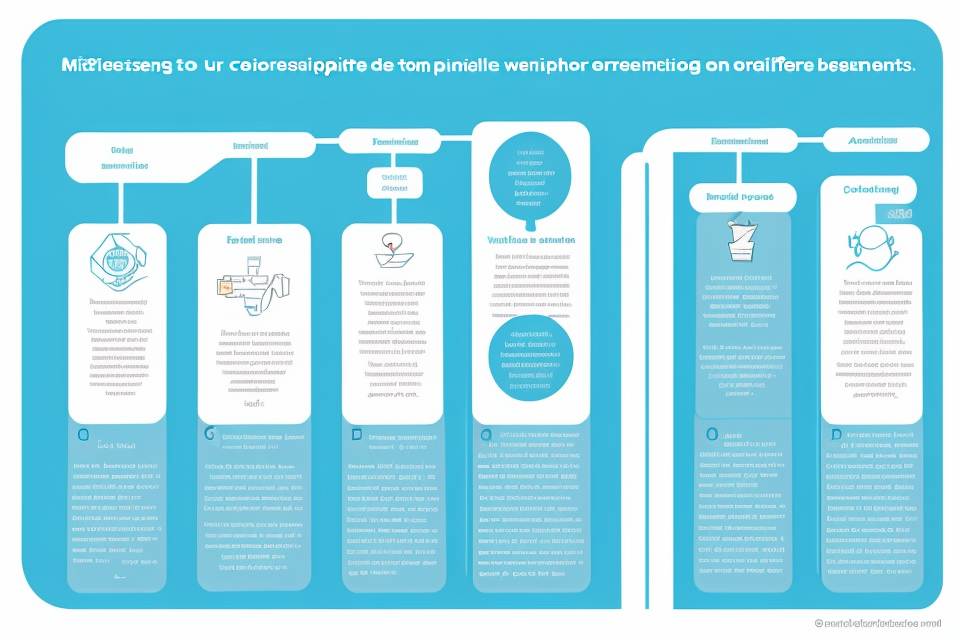
Compatibility is a crucial aspect to consider when it comes to any kind of relationship, whether it be personal or professional. It refers to the ability of two or more individuals or systems to work together effectively and efficiently. In this article, we will explore the three types of compatibility that you need to consider in order to ensure a successful and harmonious relationship. Whether it be compatibility in love, friendship, or business, understanding these three types of compatibility can help you build stronger and more fulfilling connections with others. So, let’s dive in and explore the three types of compatibility that you need to know about!
When it comes to compatibility, there are three main areas to consider: personal compatibility, relationship compatibility, and business compatibility. Personal compatibility refers to the compatibility between two individuals in terms of their values, goals, and personalities. Relationship compatibility looks at how well two people work together as a team, including communication, conflict resolution, and mutual respect. Business compatibility assesses how well two businesses or organizations can work together, including their respective strengths, weaknesses, and synergies. By considering these three types of compatibility, you can ensure that your personal, professional, and business relationships are built on a strong foundation of mutual understanding and respect.
Compatibility in Relationships
Understanding the Importance of Compatibility
Compatibility is a crucial aspect of any relationship, be it personal or professional. It refers to the degree of similarity between two or more individuals in terms of their values, beliefs, goals, ambitions, communication styles, and personality traits. Compatibility is important because it determines the level of comfort, understanding, and connection between individuals in a relationship.
Compatibility plays a significant role in determining the success or failure of a relationship. When two individuals are compatible, they are able to understand each other better, communicate effectively, and appreciate each other’s differences. This leads to a stronger bond and increased satisfaction in the relationship. On the other hand, when compatibility is lacking, relationships may suffer from communication issues, value clashes, and incompatibility in goals and ambitions, leading to conflicts and eventual breakdown of the relationship.
Therefore, it is essential to consider compatibility in relationships to ensure that both parties are on the same page and have a mutual understanding of each other’s needs, desires, and expectations.
Strategies for Building Compatibility in Relationships
Effective Communication
Effective communication is essential for building compatibility in relationships. It involves not only speaking but also listening actively and communicating openly and honestly. Active listening requires paying attention to the other person’s words, tone, and body language, and responding appropriately. Open and honest communication involves sharing thoughts, feelings, and opinions without fear of judgment or criticism.
Mutual Respect
Mutual respect is another critical aspect of building compatibility in relationships. It involves understanding each other’s perspectives and acknowledging and respecting differences. This can be achieved by being open-minded, empathetic, and willing to learn from each other. It is essential to recognize that everyone has their own unique experiences, beliefs, and values, and respecting these differences can strengthen the relationship.
Compromise and Flexibility
Compromise and flexibility are also essential for building compatibility in relationships. It involves finding common ground and being willing to adapt to each other’s needs and preferences. Compromise does not mean sacrificing one’s own needs or beliefs but rather finding a middle ground that works for both partners. Flexibility involves being open to change and willing to try new things together. It is important to strike a balance between maintaining individuality and working together as a team.
Compatibility in the Workplace
The Role of Compatibility in Employee Satisfaction
Importance of Compatibility in the Workplace
Improved Employee Productivity
Compatibility among employees plays a crucial role in determining the overall productivity of a workplace. When employees are compatible, they can work together more effectively, share ideas and knowledge, and accomplish tasks more efficiently. This results in increased productivity and a more positive work environment.
Reduced Turnover Rates
Compatibility also affects employee retention rates. When employees feel compatible with their colleagues and the company culture, they are more likely to remain with the organization for a longer period of time. This reduces turnover rates and helps to maintain a stable and experienced workforce.
Enhanced Team Dynamics
Compatibility among team members is essential for creating a harmonious and collaborative work environment. When employees are compatible, they are more likely to work well together, communicate effectively, and support one another. This leads to enhanced team dynamics and a more positive workplace culture.
Improved Job Satisfaction
Finally, compatibility in the workplace is linked to employee job satisfaction. When employees feel compatible with their colleagues and the company culture, they are more likely to enjoy their work and feel fulfilled in their roles. This leads to improved job satisfaction and a more positive overall work experience.
Identifying Compatibility Issues in the Workplace
Incompatible Work Styles
One of the primary sources of compatibility issues in the workplace is incompatible work styles. When employees have different approaches to their work, it can lead to misunderstandings, conflicts, and reduced productivity. Some common work style incompatibilities include:
Micromanagement vs. Autonomy
Micromanagement involves closely supervising and controlling employees’ work, while autonomy allows employees to work independently and make their own decisions. Micromanagement can stifle creativity and autonomy can lead to a lack of accountability.
Analytical vs. Creative Work Styles
Analytical work styles focus on logic, facts, and data, while creative work styles emphasize imagination, innovation, and originality. Analytical workers may struggle to think outside the box, while creative workers may lack attention to detail.
Task-Oriented vs. People-Oriented Work Styles
Task-oriented workers prioritize getting things done, while people-oriented workers prioritize building relationships and supporting others. Task-oriented workers may come across as insensitive, while people-oriented workers may be perceived as unproductive.
Communication Issues
Communication issues can also contribute to compatibility problems in the workplace. Some common communication incompatibilities include:
Inadequate Feedback
Inadequate feedback refers to the failure to provide constructive criticism or recognition. This can lead to confusion, frustration, and low morale.
Incompatible Communication Styles
Different employees may have different communication preferences, such as verbal or written communication, or a preference for face-to-face or remote communication. When these preferences are not aligned, it can lead to misunderstandings and conflicts.
Information Hoarding
Information hoarding refers to the practice of withholding information or resources from others. This can create a power imbalance and hinder collaboration and innovation.
Strategies for Addressing Compatibility Issues in the Workplace
Effective communication is the cornerstone of addressing compatibility issues in the workplace. To facilitate open dialogue, organizations can encourage employees to share their thoughts and opinions in a safe and supportive environment. This can be achieved through regular team meetings, one-on-one check-ins, and anonymous feedback channels. Providing clear feedback is also crucial in ensuring that employees understand their roles and responsibilities, as well as the expectations of their colleagues. To build a shared vocabulary, organizations can offer training sessions on communication skills, conflict resolution, and active listening.
Training and Development Opportunities
Providing training and development opportunities is an effective way to address compatibility issues in the workplace. Skills enhancement programs can help employees improve their technical abilities and stay up-to-date with industry trends. Additionally, building a supportive work environment can foster a sense of belonging and promote collaboration among team members. This can be achieved through mentorship programs, networking events, and employee wellness initiatives.
Job Re-Design
Job re-design is another strategy for addressing compatibility issues in the workplace. By re-evaluating job responsibilities and aligning roles with skills and interests, organizations can create a more harmonious work environment. This may involve redistributing tasks, redefining roles, or creating new positions to better suit the strengths and weaknesses of individual employees. Through job re-design, organizations can increase employee satisfaction, productivity, and retention rates.
Compatibility in Technology
The Impact of Compatibility on Technological Integration
Compatibility plays a crucial role in ensuring smooth technological integration. When different systems and devices can work together seamlessly, it streamlines processes, enhances efficiency, and improves collaboration. Here are some aspects to consider:
Interoperability
- Ensuring Seamless Integration
Interoperability is the ability of different systems to work together, despite their differences in hardware, software, or communication protocols. Achieving interoperability requires adhering to standards and specifications that enable communication and data exchange between various technologies.
- Avoiding Technological Silos
Technological silos occur when different systems cannot communicate with each other, leading to data isolation and inefficiencies. Interoperability helps break down these silos, enabling the free flow of information between different technologies and facilitating collaboration across teams and departments.
- Facilitating Data Sharing
Interoperability also allows for seamless data sharing between systems, eliminating the need for manual data entry and reducing the risk of errors. This is particularly important in industries such as healthcare, where accurate and timely data sharing can improve patient outcomes.
Backward Compatibility
- Maintaining Functionality
Backward compatibility is the ability of a newer system or device to work with older technology. This is important because it ensures that existing systems and devices can continue to function as they always have, without the need for immediate upgrades.
- Supporting Legacy Systems
Legacy systems are older technologies that are still in use but may not be compatible with newer systems. Backward compatibility helps to maintain the functionality of these legacy systems, preventing disruptions to operations and minimizing the need for costly upgrades.
Forward Compatibility
- Preparing for Future Upgrades
Forward compatibility is the ability of a newer system or device to work with newer technology. This is important because it ensures that as technologies evolve, newer systems and devices will continue to function as expected.
- Ensuring Long-Term Sustainability
Forward compatibility also helps to ensure long-term sustainability by enabling the gradual phasing out of older technologies. This can help organizations save money by delaying upgrades and minimizing the need for costly and disruptive changes in the future.
Strategies for Ensuring Compatibility in Technology
Standardization
Adopting Industry Standards
One strategy for ensuring compatibility in technology is to adopt industry standards. This involves the adoption of established guidelines, protocols, and best practices that have been developed by industry experts and organizations. By adhering to these standards, companies can ensure that their technology is compatible with other systems and products in the market. This can help to facilitate seamless integration, interoperability, and data exchange between different systems and devices.
Promoting Interoperability
Another strategy for ensuring compatibility in technology is to promote interoperability. Interoperability refers to the ability of different systems and devices to work together and exchange data seamlessly. To promote interoperability, companies can invest in research and development to ensure that their technology is compatible with other systems and products in the market. They can also participate in industry initiatives and collaborations that promote interoperability standards and guidelines.
Testing and Validation
Testing and validation is another critical strategy for ensuring compatibility in technology. This involves conducting thorough testing to ensure that different systems and devices can work together seamlessly. Companies can invest in automated testing tools and processes to validate the compatibility of their technology with other systems and products in the market. They can also conduct rigorous testing to identify and address any issues or challenges that may arise during integration or interoperability.
Continuous Improvement
Continuous improvement is another key strategy for ensuring compatibility in technology. This involves regularly updating and upgrading technology to ensure that it remains compatible with other systems and products in the market. Companies can invest in research and development to identify emerging technologies and trends that may impact compatibility. They can also adopt a culture of innovation that embraces new technologies and approaches to ensure that their technology remains compatible and relevant in the market.
FAQs
1. What are the three types of compatibility?
The three types of compatibility are hardware compatibility, software compatibility, and human compatibility.
2. What is hardware compatibility?
Hardware compatibility refers to the ability of different hardware components to work together. This includes the compatibility of different computer components such as the motherboard, processor, memory, and hard drive.
3. What is software compatibility?
Software compatibility refers to the ability of different software programs to work together. This includes the compatibility of different operating systems, applications, and software updates.
4. What is human compatibility?
Human compatibility refers to the ability of different people to work together effectively. This includes the compatibility of different personalities, work styles, and communication styles.
5. Why is hardware compatibility important?
Hardware compatibility is important because it ensures that all the different components of a computer system work together seamlessly. If different hardware components are not compatible, they may not work properly or may not work at all.
6. Why is software compatibility important?
Software compatibility is important because it ensures that different software programs can work together without issues. If different software programs are not compatible, they may not work properly or may not work at all.
7. Why is human compatibility important?
Human compatibility is important because it ensures that people can work together effectively. If different people are not compatible, they may have conflicts, misunderstandings, or communication breakdowns, which can negatively impact the work environment.


